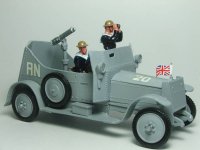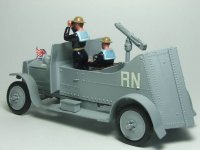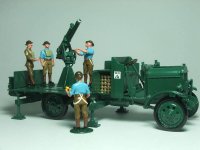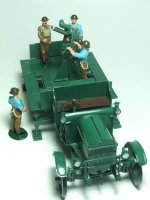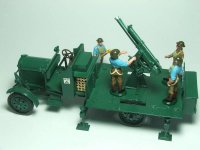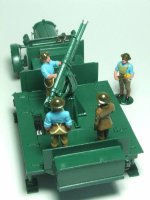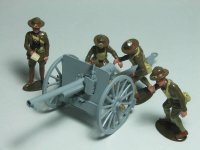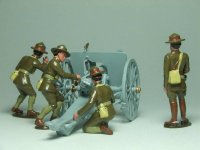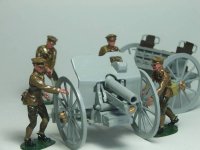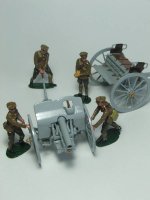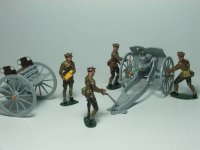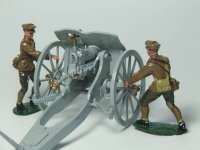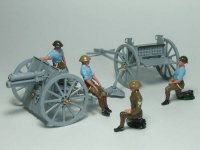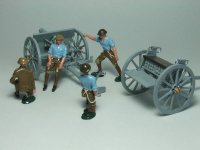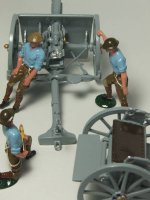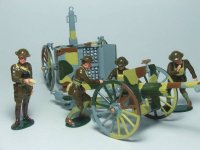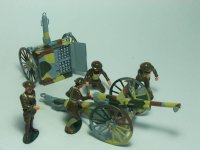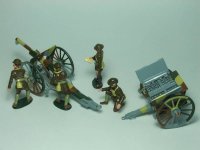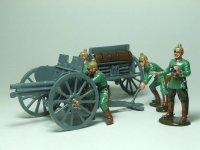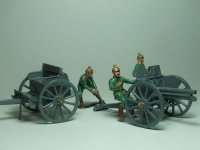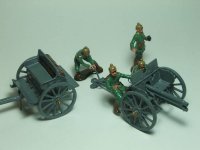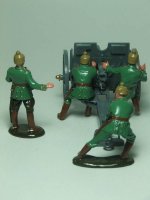kogu
2nd Lieutenant
- Joined
- Mar 1, 2007
- Messages
- 3,635
The WWI or "The Great War" has been featured a lot by several glossy manufacturers. One of them was Britains and I would like to bring up some of their sets here.
To start with, from the Premier Series by Charles Biggs, I have set no. 8925, Royal Naval Air Service Armored Car.
"The First Lord of the Admiralty, Winston Churchill, in 1914 ordered a Royal Naval aeroplane force to be stationed on the French coast. Their task was to seek and destroy Zeppelin airship bases in France and Belgium and prevent aerial attacks on London and the south.
To protect the airfields he then organised a batch of 250 men with 100 armed vehicles from The Royal Naval Air Service based at Eastchurch in Kent. They were sent to Dunkirk under Commander CR Samson, RN to carry out this task.
Samson immediately organised and led motor car patrols with mounted machine guns.
After several encounters with Uhlans, the German cavalry, Samson realized the value of armor and had his brother Lt. FR Samson RNVR draw up plans to fit armor to the cars. Using first his own car a Mercedes and then a Rolls Royce Silver Ghost 40/50HP of the Alpine type, a local Dunkirk shipyard fitted these with boiler plate armor.
However, the armor was only strong enough to stop an English rifle bullet at 500 yards.
To keep the weight down it was only fitted in front of the driver, the radiator and at the rear to protect the machine gunner, leaving the driver vulnerable from the sides."
Here are two pics of this set.
Konrad
To start with, from the Premier Series by Charles Biggs, I have set no. 8925, Royal Naval Air Service Armored Car.
"The First Lord of the Admiralty, Winston Churchill, in 1914 ordered a Royal Naval aeroplane force to be stationed on the French coast. Their task was to seek and destroy Zeppelin airship bases in France and Belgium and prevent aerial attacks on London and the south.
To protect the airfields he then organised a batch of 250 men with 100 armed vehicles from The Royal Naval Air Service based at Eastchurch in Kent. They were sent to Dunkirk under Commander CR Samson, RN to carry out this task.
Samson immediately organised and led motor car patrols with mounted machine guns.
After several encounters with Uhlans, the German cavalry, Samson realized the value of armor and had his brother Lt. FR Samson RNVR draw up plans to fit armor to the cars. Using first his own car a Mercedes and then a Rolls Royce Silver Ghost 40/50HP of the Alpine type, a local Dunkirk shipyard fitted these with boiler plate armor.
However, the armor was only strong enough to stop an English rifle bullet at 500 yards.
To keep the weight down it was only fitted in front of the driver, the radiator and at the rear to protect the machine gunner, leaving the driver vulnerable from the sides."
Here are two pics of this set.
Konrad


